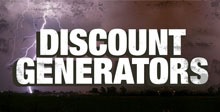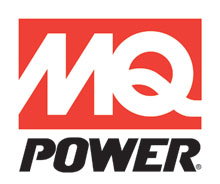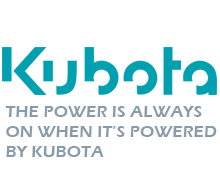Tier 4 Generator Compliance
- By Kelsey Lepperd
- Oct 8, 2015
Over the last 18 years, the US Environmental Protections Agency has worked to implement a tiered system of emissions standards to address pollution issues in non-road diesel engines. Every year, the standards have become more stringent on manufacturers to utilize technological advancements in order to lower the total emission levels, and in 2015, these standards reached their highest limitations with the introduction of ‘Tier 4 Final’ compliance. Generators complying with 4F standards require exhaust emissions to decrease by more than 90%.
The EPA has been implementing these standards every year since 1994, so it’s important to back up a minute and understand what’s happened since then. These changes can be most easily understood by separating them into two categories: Tier 1-3 Standards and Tier 4 Standards.
Tier 1-3
In 1996, the EPA, California Air Resource Board, and a number of engine manufacturers signed a Statement of Principles regarding non-road diesel engines. Between 1994 and 2008, standards for Tiers 1-3 were phased-in to reduce pollution from the emissions of off-road diesel engines.
The following elements were increasingly regulated in these tiers based on horsepower:
- Nitrogen oxide (NOx)
- Particulate matter (PM)
- Smoke standards
- Hydrocarbons (HC)
- Averaging, banking, and trading of emissions; maximum ‘family emission limits’ (FEL) for emission averaging
Tier 1 phased in between 1996 and 2000, Tier 2 between 2001 and 2006, and Tier 3, which only applied to engines with 37-560kW, between 2006 and 2008.
Sulfur content was not regulated by the agency for Tiers 1-3.
Tier 4
Tier 4 Compliance is what will most affect manufacturers and owners now and into the future. Since 2008, the EPA has more stringently regulated:
- NOx (engines above 56kW)
- PM (above 19kW)
- HC
The EPA also requires the use of Ultra Low Sulfur Diesel Fuel, which reduces the amount of sulfur emissions emitted by these generators by 99 percent to a level of less than 15 parts per million in concentration.
Unchanged from Tier 1 and 2 are CO2 limits, the same averaging, banking, and trading of emission credit, as well as FEL limits for emission averaging. From Tier 2 and 3, smoke opacity standards are the same, except engines with a PM emission level of < .07g/kWh are exempt. Tier 4 compliance did not require closed crankcase ventilation, though if open, crankcase emissions are measured and added to the exhaust emissions total.
So what happens in 2015?
You may notice that some equipment is Tier 4i Compliant while others are Tier 4F Compliant. Tier “4i”, or interim, regards the emission standards set forth in 2011 for high-horsepower diesel generator engines. As discussed below, Tier 4i introduced even lower NOx emissions, in addition to expanding operational use to include non-emergency use with Tier 4i certification.
Tier “4F”, or final, are those standards effective for all large stationary generator sets as of 2015. With another reduction in PM levels, F4 is the highest level of clean air regulations.
Allowable Emissions
| Exhaust constituent | Tier 4i (752-1207kW) | Tier 4i (1207kW) | Tier 4 Final |
| NOx | 3.5 | .67 | .67 |
| HC | .40 | .40 | .19 |
| CO | 3.5 | 3.5 | 3.5 |
| PM | .10 | .10 | .03 |
Emergency vs. Non-Emergency Use
“Stationary emergency applications,” as defined by the EPA, are those when the generator set runs only during periods of outage of the normal utility power supply. The EPA doesn’t limit the number of hours a generator may operate during emergency use, though keep in mind that Tier 2 emission standards are in place during emergency usage.
For non-emergency use, the EPA limits operation to 100 hours per year, which includes maintenance, testing, and exercise usage. Prime power, rate curtailment, and storm avoidance are all considered non-emergency use.
What if my generator is already Tier 4i certified?
The 2015 4F classification applies only to new generator sets installed after the standard’s effective date. 4i certifications have been in effect since 2011, so all units installed since 2011 are acceptable for continued usage without being re-certified.
Certified, compliant, or verified?
You may see all of these terms when looking for 4i or 4F compliance, so it’s important to understand what they mean.
Certified: Your complete system was tested by the EPA on the manufacturer’s site. No additional testing is required once installed.
Compliant: This means your system was tested internally by its manufacturer and complies with 4i or 4F standards, but must be tested again by the EPA once installed to verify compliance. This is also referred to as “verified.” Site verification is not a substitute for EPA certification.
The Outcome?
With the completion of Tier 4, annual emission reductions are estimated at 738,000 tons of NOx and 129,000 tons of PM. By 2030, an annual 12,000 premature deaths would be prevented.
Absolute Generators is proud to carry a selection of EPA Tier 4 Certified generators for our customers. Many of the machines we offer are EPA Tier 3 certified, CARB Compliant, and accordant with a number of other agencies. When you're searching for a new generator, you can find out what agencies have approved your generator by using the search tool bar on the left side of the page, scrolling all the way down to 'Agency Compliance', and selecting the agencies from the dropdown menu.
|
|
|









